Facebook ads are one of the most powerful advertising tools that marketers can use today. When it comes to understanding best practices for Facebook Ads, copy, and creative, there are a lot of parts to break down.
In this feature, we are going to share about:
- The Fundamentals of Facebook Ads
- Breaking Down The Facebook Ads Funnel
- How To Write Facebook Ad Copy That Converts
- How To Create Video Ads That Grab Attention And Sell
- How To Create Image Ads That Stand Out On Facebook
The Fundamentals of Facebook Ads:
Facebook has 2.74 billion monthly active users, and 18.3% of U.S. adults have made a purchase through the platform in the last year... it’s safe to say that it’s an effective place to advertise in order to get eyeballs and drive sales.
In order to use Facebook ads to their fullest potential, it comes down to first understanding the fundamentals of ads and how they’re structured.
Let’s start with the difference between campaigns, ad sets, and ads.
Campaigns:
Campaigns are the “highest level” of creation for your Facebook ads; this is where you choose the overall objective based on your advertising goals.
When selecting the objective, you can decide from a variety of options that are broken down according to the type of ad: awareness, consideration and conversion.
Awareness ads are like billboards; the main goal is to drive views/impressions.
Consideration ads are for driving an action like taking someone to the blog on your website. They are called “consideration” because this is often the time when someone is considering the various options they have available to them.
Conversion ads are intended to drive a sale, like a website purchase. These ads are typically the most costly because they are the types of ads that actually cause the audience to take an action to generate sales. Generally, the closer your objective is to a conversion, the more you’ll have to spend to achieve the objective.
Ad Sets:
The ad set is the next “level” after the campaign. This is where you set the targeting for your ad, decide the placements, and determine the length of time the ad will run.
The ad set level is where you start to fill in the details for the start and end date of the campaigns and exactly who you want to target and/or exclude in your audience.
This is where you’ll select custom audiences and/or build/edit from the audiences inside of Facebook.
If you are executing a conversion campaign, this is where you’d select the conversion event you want the ad set optimizing for such as purchases or leads.
Ideally, don't have more than 3-5 ad sets per campaign. If you have too many ad sets in one campaign, the learning will take too long for Facebook to optimize your overall campaign's performance.
After you finish building your ad set, you move on to creating the ad.
Ad:
The ad is the final step in building your campaign. This is where you determine the type of "creative" that you’ll be using, write the copy, decide your call to action button and insert your website URL.
The ad level is all about executing the details of exactly what the ad will look and sound like.
Each ad set should have about 1-3 ads in it. Again, if you have too many ads in each ad set learning can take too long for your overall performance to be optimized.
Try to think about Facebook ads like a funnel.
At the top of the funnel, you are building awareness and trying to get eyes on your products and services with ads. In the middle of the funnel, you engage more with your audience and get them to visit your website.
After they’ve become engaged website visitors and have looked at your products/services you get them to convert and buy your product/service with bottom-of-funnel ads.
Vital Metrics:
Now that we know how to set up ads, it’s important to cover how to analyze the ad’s performance and which metrics to pay attention to, inside of the analytics dashboard. It's also critically important to understand the Facebook pixel and how to set it up properly.
Facebook gives you access to SO much data, so we recommend focusing on the following metrics:
- Spend (how much you've spent on ads)
- CPM (cost per 1,000 impressions)
- Impressions (how many times your ad has been seen)
- Reach (how many unique people have seen your ad)
- Frequency (impressions per reach) A Frequency of 2 means that each person targeted has seen the ad twice. It’s important to keep an eye on this so that it doesn’t get too high. If your frequency is high, then people will get tired of seeing the same ad, and results will diminish.
- CTR (clickthrough rate)
- CPC (cost per click)
- Landing page views (this will be lower than Link Clicks because there will be some drop-off between the click and people arriving on the landing page)
- Purchases (this shows the number of purchases people have made)
- Cost per Purchase (how much each purchase costs to get)
- ROAS (return on ad spend = Sales/Spend i.e.: if your ROAS is 2, you are earning $2 in sales for every $1 spent on ads)
Note: not all of these metrics will be equally important to your brand.
That said, understanding the way that some of these metrics interact with each other is critical to analyzing the data correctly.
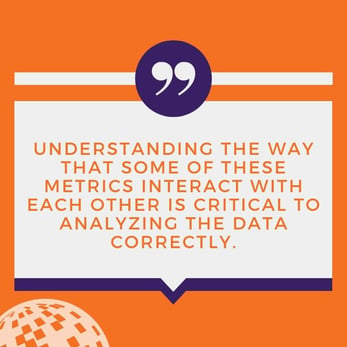
For instance...
- A higher frequency usually means a lower clickthrough rate. People will get tired of seeing the same ad, so they will be less likely to click on it.
- The higher the CPM (cost per 1,000 impressions), the lower the website traffic. That’s because when the CPM is up that means the ad price is higher, so your ads will be shown to fewer people than when they cost a lower price.
- The lower the conversion rate of your website, the lower your sales will be with the same amount of traffic.
- The higher the CTR, the more website traffic will be generated!
Understanding these relationships allows you to take action when seeing specific metrics.
For instance, if the CTR is low, you’ll want to look at the frequency. Is it too high, causing the CTR to drop? >> It’s also important to check the creative and the copy. If the CTR is high but purchases are low, it’s worth investigating what’s going on with the landing page.
Analyzing the data:
What’s nice about the analytics inside of Facebook is that you have the ability to completely customize your dashboard to focus on the specific metrics that matter most to your brand.
We recommend using custom column views and adding whatever metrics are most meaningful to you based on your goals. You can then save your view as a pre-set so that you can view it again at a later time.
In this example, we selected columns we want to view then clicked on the “Save as Preset” checkbox and named our view “Reporting Overview.”
By understanding these fundamentals, you can start to make use of the power of Facebook ads to drive awareness and engagement for your business!
Now that we understand the fundamentals, let's dive into the Facebook Ads funnel.
Breaking Down The Facebook Ads Funnel
Selling to people is a lot like dating...You can’t just ask someone to marry you on the first date. You have to get to know them first.
Similarly, for ads it’s best to introduce your brand, warm up your customers, then ask for the sale. It’s a 3-phase approach that starts with awareness, then consideration, and then conversation ads.
Overview of the main goals of these three types of ads:
- Awareness - Get eyes on your brand.
- Consideration - Move your audience to your website and browse your products/services.
- Conversion - Encourage people to take action/buy.
So, let’s break down each of these three types of ads to best understand when and where they make sense for your business.
Awareness Ads - Top of the Funnel:
At the top of the funnel is awareness which is all about getting eyes on the product and brand. It’s that open invitation to “get to know us” where we can share our story and how we are different.
 What: These kinds of ads are all about introducing yourself to your target audience and letting them get to know you.
What: These kinds of ads are all about introducing yourself to your target audience and letting them get to know you.
Who: Awareness ads are meant to be served to people who don’t yet know you, so you’ll want to exclude people that have purchased from you when creating this audience at the ad set level.
Why: The main goal of an awareness ad is to get eyes on your brand while also providing value to your audience.
How: Think about what kind of content you can provide to your audience that will be valuable for them and help to solve some of their pain points. It’s not about trying to sell them on anything but rather showing them who you are and the type of value that you have to offer.
Consideration Ads - Middle of the Funnel:
At the middle of the funnel is consideration, which is all about driving engagement with the brand. Now that you've generated awareness, it's time to get that audience to engage with the content, visit the website to read more, and start viewing products/services.
What: Consideration ads are all about showing your target audience WHY you are the best choice.
 Who: The best target audience for consideration ads are people that know you or are already familiar with you. They’ve seen your awareness ads or are already engaged and therefore know something about you. Custom audiences are perfect to target here because these folks have already shown an interest in the brand.
Who: The best target audience for consideration ads are people that know you or are already familiar with you. They’ve seen your awareness ads or are already engaged and therefore know something about you. Custom audiences are perfect to target here because these folks have already shown an interest in the brand.
Why: Because these folks know you, the goal for consideration ads is to get them to take the next step with you which likely translates to visiting your website to read about your products and services.
When: These are the kinds of ads that you’ll run after creating that general sense of awareness about who you are and what you do.
How: User-generated content and testimonials work really well for these kinds of ads because they help “make the case” for you without you inflating your brand in the process.
Conversion Ads - Bottom of the Funnel:
At the bottom of the funnel is conversion, this is where we use strong calls to action that ask people to buy or perform that action which you've deemed a conversation.
What: Conversion ads are all about trying to move the needle and get a purchase.
Who: Conversion ads are most effective and impactful when you are targeting individuals who are highly engaged with your website. Here you can target people who have browsed your products, added them to their cart, but haven’t purchased yet. Be sure to exclude people who have recently made a purchase though, so as not to annoy your current customers.
Why: The goal for conversion ads is exactly that: drive conversions/sales on the website.
When: These ads are best served after you’ve been engaging an audience and providing them with high-quality, valuable content for a little while. You don’t want to try to push for conversions too early.
How: Testimonials and user-generated content will work great here too. Also, just be straightforward. Clear, simple calls to action are most effective when it comes to paid advertising. Don’t make your audience guess what you’d like them to do.
By operating with a strong knowledge of the Facebook ads funnel, we ensure that we are creating the right ads for the right people given where they are at in the buyer’s journey.
Now it's time to dive into ALL things Facebook copy.
How To Write Facebook Ad Copy That Converts
We all know how frustrating it is to put tons of time and effort into a Facebook ad only to see it fall flat. Womp, womp… (insert: shoulder slump)

It can be hard to know where to start when it comes to fixing an ad that isn’t performing up to your expectations.
When an ad is under-performing, you likely find yourself wondering: was it the copy? Was it the image we used? Was it the wrong targeting?
Looking through all of the elements of your ad (and your metrics) will help you get clarity on the specific areas that you can tweak in order to try to drive more eyeballs and engagement.
One of the things that we’ve found to be the most impactful when it comes to conversions is writing effective copy.
Research:
When writing ad copy, the best place to start is with research. This means really taking the time to research not just your target audience, but your own offering.
 Look at reviews on Amazon, Google or Yelp, to see what people are saying about your products/services. This will really help you to figure out what specific benefits people find most valuable.
Look at reviews on Amazon, Google or Yelp, to see what people are saying about your products/services. This will really help you to figure out what specific benefits people find most valuable.
Take time to figure out the main points that you want to convey with your ad. You want to really zero in on the specific benefits your product or service provides.
Focusing on the benefits, NOT the features, will allow your audience to best understand how your offering fits into their lives.
By researching your audience and understanding their interests and likes, you can figure out what the best approach is to crafting copy that will drive them to take the desired action.
Hooks:
Once you’ve done the research to really understand your audience’s pain points, what they care about, the language they use and what matters to them, you can start to really make a hook that will capture their attention.
The best hooks...
- capture and bring to light the problems/pain points that your audience is experiencing
- grab attention and get people wanting to read and learn more
Test a variety of hooks:
- Ask a question that is relevant to your audience
- Addressing common pain points personally
- Making a bold statement
These tactics are all proven to drive more engagement.
Similarly, state facts - and specific benefits - about your product. Doing this makes it really easy for your audience to understand exactly what it is that you have to offer them. By focusing on the benefits that your product provides, you show how it impacts their lives. This makes it more likely that you’ll drive conversations because it clearly shows how you will solve their problem/pain point.
Open-loop statements such as “you’re going to have to trust us on this” or asking questions are also extremely effective. Think of phrases like this that add curiosity and make people want to find out more.
Don’t forget - make it simple. Your ad copy should be easily digestible for your audience. Don’t have long paragraphs, but instead think of bite-sized sentences. And don’t make them guess what it is you’re offering. Have one clear angle and one clear call to action.
Using Copy To Drive Engagement:
In addition to strong hooks, there are many other ways that you can be using copy to drive engagement with your ads.
 One of the most obvious? >> Being true to your brand voice. You want your ads to sound like your brand and seem conversational.
One of the most obvious? >> Being true to your brand voice. You want your ads to sound like your brand and seem conversational.
Here are 5 more tactics we recommend trying with your copy:
- Add urgency: Urgency drives action. Get people to click on your ads by telling them when the deal expires. Copy like: “Save 10% TODAYoday” and “This shirt has sold out 3x before” and “10% Off 'Til Friday” helps create urgency and increases the likelihood of driving clicks. Without urgency, people may not be motivated to take action.
- CTAs: This is critical. If you want to drive clicks, you have to include a call to action (CTA) in your ad. Literally, state exactly what you want your audience to do and be SUPER clear about it by picking the best button that Facebook offers. Brands try to be clever with their CTA’s and end up confusing the audience in the process. Be straightforward in your call to action. One ad should have ONE CTA. Don’t confuse your audience by asking them to do more than one thing. If you tell people to do two or three things, they will do none.
- Use emojis: It’s proven that emojis drive more engagement in copy. Test the impact of including emojis in your ad copy - to humanize the text. Keeping the copy conversational. The use of smiley faces and pointing hands can help to illustrate points while also making your copy more inviting and personal.
- Make it digestible: Don’t overemphasize everything by using too many exclamation points!!! (They can sometimes seem desperate.) Be cautious with them and use them wisely. You want to make your ad approachable and digestible which means being mindful of case-use, spacing, design and formatting. Using bullet points or emojis to break up paragraphs can help make the ad more readable. Also, be careful of capitalizing too many words in your copy.
- Leverage social proof: Use user-generated content and testimonials as a way of providing more trust and authenticity. User-generated content is proven to drive 28% more engagement than a standard brand post, finding ways for your audience to tell the story for you is extremely effective.
Remember to avoid using too much text on your image ads, as those ads are known to perform worse, and stick to putting the most important aspects of your copyright into the caption.
Examples Of Copy That Converts:
By taking the time to really research and understand your audience and their preferences, you have the ability to execute creative concepts that will get their attention.
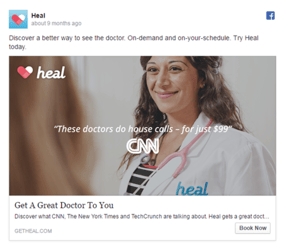 Using hooks, a clear CTA, leveraging social proof, using emojis, focusing on benefits, and adding urgency will allow you to create copy that converts.
Using hooks, a clear CTA, leveraging social proof, using emojis, focusing on benefits, and adding urgency will allow you to create copy that converts.
When laying out your ad copy you can try different copywriting frameworks. One of our favorites is to start with a hook, present the problem/pain point, present a solution, mention the features and specific benefits, show social proof, and lastly, include the call to action.
What do you think? What are your tips for creating copy that drives conversions?
Share your tips with us in the comments below and let's move on to video ads!
How To Create Video Ads That Grab Attention And Sell
It seems like every year is “the year of video,” according to digital marketing experts.
 Given the fact that by 2022, online videos will make up more than 82% of all consumer internet traffic, it’s important to take advantage of video.
Given the fact that by 2022, online videos will make up more than 82% of all consumer internet traffic, it’s important to take advantage of video.
There’s no faster way to connect with an audience than you can through video.
A few other notable video marketing statistics:
- Viewers retain 95% of a message when they watch it in a video, compared to 10% when reading it in text. (Insivia)
- 72% of customers would rather learn about a product or service by way of video. (HubSpot)
- People are 1.5 times more likely to watch video on their mobile phones. (Facebook)
- One million minutes of video cross the internet every second. (Cisco)
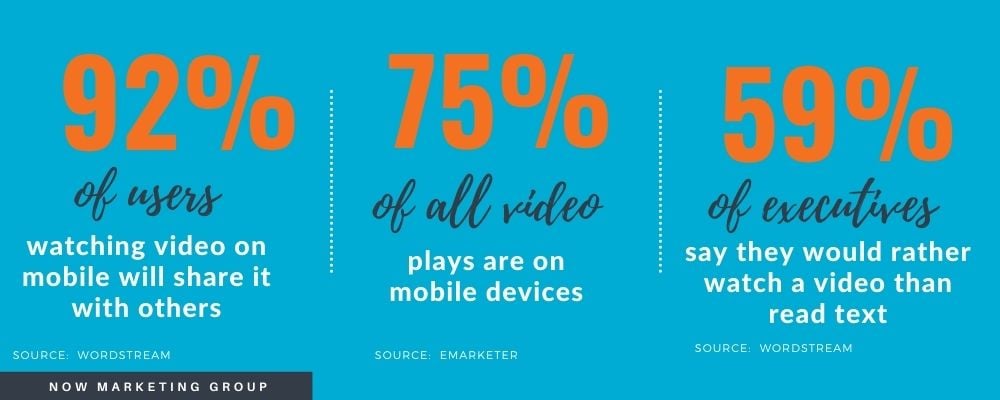
There’s no mistaking the fact that incorporating video into your organic and paid social media marketing strategies is critical in order to continue to stay relevant and drive conversions.
Getting Started:
Consumers LOVE video which is why it’s smart to include it as a part of your overall content marketing strategy.
Creating video ads that work doesn’t have to be complex. It comes down to following best practices, understanding your audience, and understanding the platform.
Best Practices:
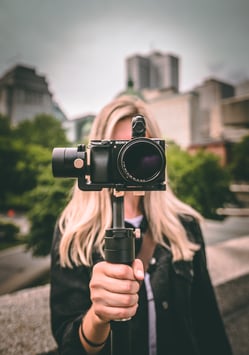
When executing video ads, there are many best practices to use as a guide, which will impact how many views your video gets and whether it drives your audience to take action.
Understanding these best practices will help set you up for success:
- Grab attention: It’s important to understand that we have short attention spans, so you’re going to want to try to capture attention immediately with your video with a hook. Use movement and include the most compelling part of the video at the start as a way to grab people’s eyes and draw them in so that they continue to watch past the first 3-seconds. Also, make use of quick transitions as a way to keep people watching throughout the video.
- Square sizing: The square format or 4:5 ratio is the best when it comes to sizing your video for ads. This will make sure your ads are taking up the most real estate on people’s feeds.
- User-generated content: We could talk for days about how important it is to incorporate UGC into your marketing. UGC is humanizing AND is proven to drive more engagement than standard brand posts. Let your audience speak to the pain points and tell the story of how to use your product/service; that is going to be much more believable than your brand doing the talking. This is pretty much the most valuable content you can get for your ads.
- Speak to the audience: Your video should speak directly to the target customer. Be super clear about what you are solving for them and how your product specifically solves their pain point. People want to know what's in it for them. Make sure to tell them!
- Design with sound off: The best videos SHOW the message. They are created so that the audience can still capture the value even if they watch it with the sound off. Since most people are scrolling without sound, you want to be sure that you include captions and text to make your video just as impactful when it is played with or without sound. You’ll also want to visually SHOW as much as you can. SHOW the pain points people have, SHOW how your product solves that pain point, then SHOW a happy customer.
Ideally, your ad functions as a movie trailer. It captivates the audience and stops the scroll. Be sure to show your brand identity right away, as most of the impact of the ad is within the first 10 seconds.
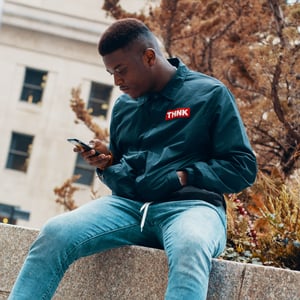 When creating videos, use your brand voice. Simplify the messaging, remove the fluff and highlight the benefits of the product/service. This is what will be memorable and most likely to drive an ROI for your efforts
When creating videos, use your brand voice. Simplify the messaging, remove the fluff and highlight the benefits of the product/service. This is what will be memorable and most likely to drive an ROI for your efforts
Ideas For Using Video In Your Ads:
Now that we understand the power of video marketing and what some of the best practices are for creating video ads, it’s time to dive into the wide variety of ways that you can incorporate video into your content mix.
Below are 3 ideas for how your brand can use video today:
- Unboxing: Do a product unboxing and showcase the product. Showcase the packaging and the specific features of the product to your audience.
- Reviews: Have your audience chime in and share what they love about your product, why they chose it, and what pain point it solves for them. This content is humanizing, informative, and engaging because your customers are the ones sharing why they shop with you. After you’ve gathered a few of these videos you can even make a compilation of some of the best ones to run as an ad.
- Reactions: Showcase before and afters. The more you can incorporate human faces, the better! Seeing happy, smiling faces is going to tap into people’s emotions and that is going to be memorable.
It’s less about the exact kind of video you create and more about your brand’s willingness to use this type of media to provide value to your audience. Test various videos and angles to see what resonates best for your customers.
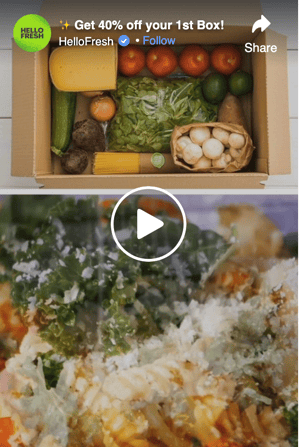 The Flow Of A Video Ad:
The Flow Of A Video Ad:
The strongest video ads have a specific flow to them that really helps to keep people’s attention until the end of the video.
The flow for a video ad is as follows: it starts with the hook. The hook is about grabbing attention and getting right to the point by asking the audience a question or making a bold statement that calls out their problem/pain points.
The video should look organic to the platform from the start and grab people’s attention by the first 3 seconds by getting RIGHT to the message.
Next, the video should include the "solution," features and use cases, the benefits, social proof/validation, handling of objections and showing a demo. In order to keep people watching, you want to utilize captions/overlays and jump cuts, and be sure to have something change every 3-5 seconds if possible. Incorporating simple tweaks like scene changes, different angles, zooming in/out, or text pop-ups can all help keep people’s attention.
Lastly, a successful video ad must end with a clear and strong call to action... with you stating exactly what the viewer should do next.
What do you think? Do you have ideas on how to use video as a part of your content marketing strategy?
Share them in the comments below and keep reading as we finish this post by sharing all about image ads!
How To Create Image Ads That Stand Out On Facebook:
When it comes to advertising on Facebook, the quality of your imagery is critically important.
Consumers have such limited attention spans, your image is going to be what first captures people’s attention.
Getting Started:
When getting started with creating image ads, there needs to be a clear understanding of the goal of your campaign. Without understanding exactly what you want your ad to do, you’ll struggle to find imagery that best fits the concept.
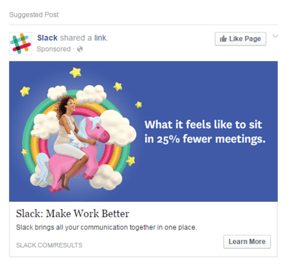 Understanding exactly what you are going to ask people to do as a result of consuming your ad is the best way to get started when building any Facebook Ads.
Understanding exactly what you are going to ask people to do as a result of consuming your ad is the best way to get started when building any Facebook Ads.
Best Practices:
When it comes to image ads, there are a number of best practices that your brand can follow in order to maximize the chances of success.
Facebook image ad best practices:
- High-quality: images that are bright and clear are going to be your standouts. So, whether you’re taking photos yourself OR tapping into Facebook’s large library of stock photography, you want to be sure to use a high quality/high resolution, image(s).
- Limited text: you don’t want your ad to LOOK like an ad. The strongest image ads are those that don’t feel like billboards, so limit the text on your ad. Don’t overwhelm the image. Make the text feel organic.
- Show people: we all resonate with humans more than we resonate with logos. Humanize your ad's creative by showing the faces of your happy customers. Smiling faces create emotions and emotions are memorable. Lifestyle images are not only humanizing but also relatable and personable.
- Sizing: A 4:5 ratio OR 1:1 square image is going to perform best. Also, you want your product to take up at least half of the image if possible, so people can see it clearly and prominently in the feed. The product should really be the star of your ad.
- Clarity: Clearly showcase the product front and center. Don’t make your audience guess what the ad is for! That’s a total waste of money.
They won’t look like ads but rather, they’ll look like posts (like these examples,) which are going to be hugely beneficial for your ad’s performance.
Mistakes To Avoid:
Just like there are best practices to follow when it comes to Facebook ads, there are also things that you want to try to avoid when executing your ads.
- Using other brand logos: Definitely don’t use/show any other brand logos in your ad. That’s going to confuse the audience about who the ad is for. Keep your branding minimal but clear.
- Using a lot of text: We made this point above in the best practices section, but it bears repeating because it’s that important. You do not want your ad to look like a billboard; that’s going to turn people off. Minimize the text you use in the image so that it looks more organic.
- Being bland: Don’t fit in with your image ads. Instead, try to get creative with your images, so they stand out in people’s news feeds. For example, if you see tons of colored images in your news feed, try testing an image that is black and white.
Putting It Together:
At the end of the day, a lot of Facebook ad work comes down to testing and iterating.
Get creative by layering product images over text/graphics, using shadows, playing with angles and color, OR lack of color. Try monochromatic images and test them against black and white imagery. Make use of contrasting colors and fonts.
There are so many ways that you can play around with your imagery in a way that stays true to your brand AND has fun!
It’s eye-catching, simple, clear, and straightforward. The image is crisp and super sleek and FUN, without seeming salesy at all.
Your ad should provide one clear message and focus on the deal/discount as the priority.
At the end of the day, the brands that are willing to do something different and try new things - are going to be the brands that learn the most through their use of Facebook ads.
What do you think? What imagery do you think works the best for Facebook ads? Share your thoughts in the comments below!
Facebook Ads are an extremely powerful tool that businesses can use to drive more awareness, engage with customers and create conversions.
Each of these elements is important to understand on its own but when using the knowledge together, your brand can create ads that truly stand out, grab attention and drive conversions.
Do you have questions about how your brand can improve your Facebook Ad targeting, copy, and/or imagery?
Share it with us in the comments below!

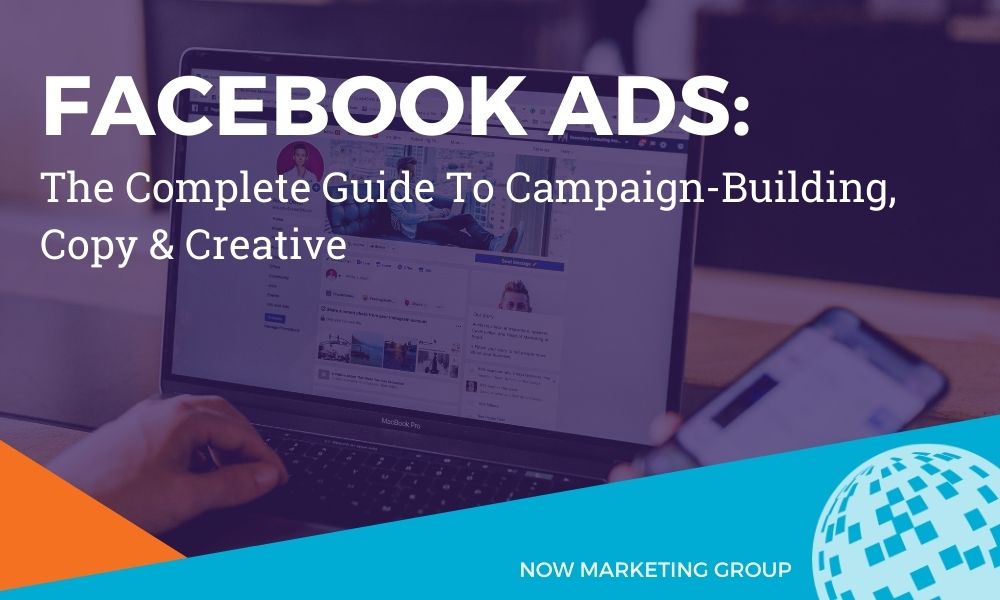

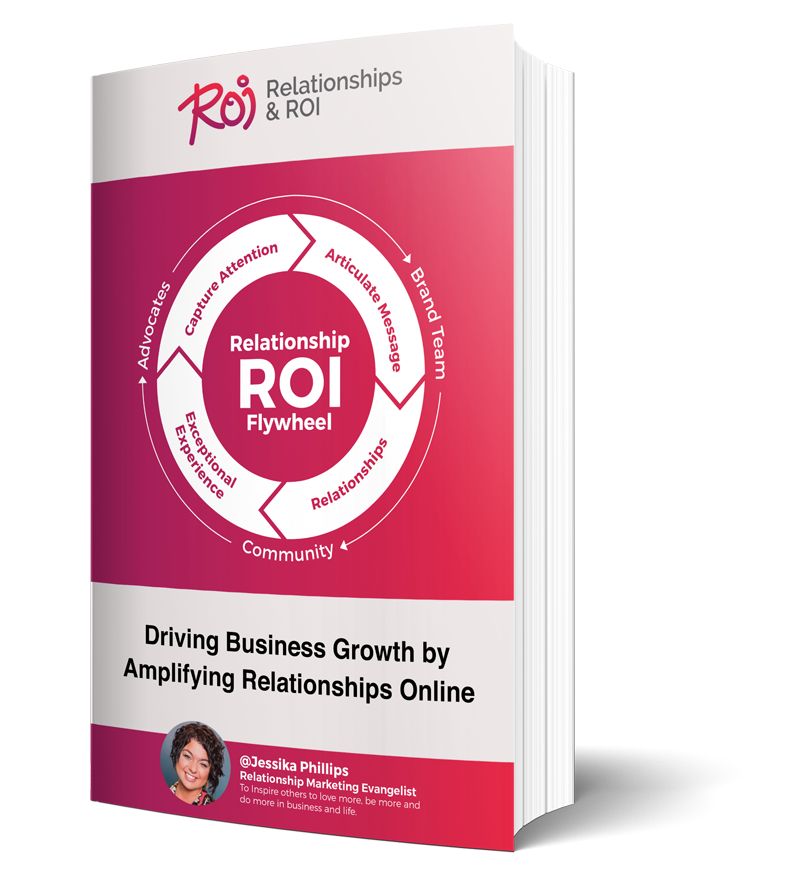
Comments